-
BackX
-
Components
-
-
Category
-
Semiconductors
- Diodes
- Thyristors
-
Electro-insulated Modules
- Electro-insulated Modules | VISHAY (IR)
- Electro-insulated Modules | INFINEON (EUPEC)
- Electro-insulated Modules | Semikron
- Electro-insulated Modules | POWEREX
- Electro-insulated Modules | IXYS
- Electro-insulated Modules | POSEICO
- Electro-insulated Modules | ABB
- Electro-insulated Modules | TECHSEM
- Go to the subcategory
- Bridge Rectifiers
-
Transistors
- Transistors | GeneSiC
- SiC MOSFET Modules | Mitsubishi
- SiC MOSFET Modules | STARPOWER
- Module SiC MOSFET ABB’s
- IGBT Modules | MITSUBISHI
- Transistor Modules | MITSUBISHI
- MOSFET Modules | MITSUBISHI
- Transistor Modules | ABB
- IGBT Modules | POWEREX
- IGBT Modules | INFINEON (EUPEC)
- Silicon Carbide (SiC) semiconductor elements
- Go to the subcategory
- Gate Drivers
- Power Blocks
- Go to the subcategory
- Electrical Transducers
-
Passive components (capacitors, resistors, fuses, filters)
- Resistors
-
Fuses
- Miniature Fuses for electronic circuits - ABC & AGC Series
- Tubular Fast-acting Fuses
- Time-delay Fuse Links with GL/GG & AM characteristics
- Ultrafast Fuse Links
- Fast-acting Fuses (British & American standard)
- Fast-acting Fuses (European standard)
- Traction Fuses
- High-voltage Fuse Links
- Go to the subcategory
- Capacitors
- EMI Filters
- Supercapacitors
- Power surge protection
- TEMPEST emission revealing filters
- Surge arrester
- Go to the subcategory
-
Relays and Contactors
- Relays and Contactors - Theory
- 3-Phase AC Semiconductor Relays
- DC Semiconductor Relays
- Controllers, Control Systems and Accessories
- Soft Starters and Reversible Relays
- Electromechanical Relays
- Contactors
- Rotary Switches
-
Single-Phase AC Semiconductor Relays
- AC ONE PHASE RELAYS 1 series| D2425 | D2450
- One phase semiconductor AC relays CWA and CWD series
- One phase semiconductor AC relays CMRA and CMRD series
- One phase semiconductor AC relays - PS series
- Double and quadruple semiconductor AC relays - D24 D, TD24 Q, H12D48 D series
- One phase semiconductor relays - gn series
- Ckr series single phase solid state relays
- One phase AC semiconductor relays for DIN bus - ERDA I ERAA series
- 150A AC single phase relays
- Rail Mountable Solid State Relays With Integrated Heat Sink - ENDA, ERDA1 / ERAA1 series
- Go to the subcategory
- Single-Phase AC Semiconductor Relays for PCBs
- Interface Relays
- Go to the subcategory
- Cores and Other Inductive Components
- Heatsinks, Varistors, Thermal Protection
- Fans
- Air Conditioning, Accessories for Electrical Cabinets, Coolers
-
Batteries, Chargers, Buffer Power Supplies and Inverters
- Batteries, Chargers - Theoretical Description
- Modular Li-ion Battery Building Blocks, Custom Batteries, BMS
- Batteries
- Battery Chargers and Accessories
- Uninterruptible Power Supply and Buffer Power Supplies
- Inverters and Photovoltaic Equipments
- Energy storage
- Fuel cells
- Lithium-ion batteries
- Go to the subcategory
-
Automatics
- Spiralift Lifts
- Futaba Drone Parts
- Limit Switches, Microswitches
- Sensors, Transducers
-
Infrared Thermometers (Pyrometers)
- IR-TE Series - Water-proof Palm-sized Radiation Thermometer
- IR-TA Series - Handheld Type Radiation Thermometer
- IR-H Series - Handheld Type Radiation Thermometer
- IR-BA Series - High-speed Compact Radiation Thermometer
- IR-FA Series - Fiber Optic Radiation Thermometer
- IR-BZ Series - Compact Infrared Thermometers
- Go to the subcategory
- Counters, Time Relays, Panel Meters
- Industrial Protection Devices
- Light and Sound Signalling
- Thermographic Camera
- LED Displays
- Control Equipments
- Go to the subcategory
-
Cables, Litz wires, Conduits, Flexible connections
- Wires
- Cable feedthroughs and couplers
- Litz wires
- Cables for extreme applications
- Sleevings
-
Braids
- Flat Braids
- Round Braids
- Very Flexible Flat Braids
- Very Flexible Round Braids
- Cylindrical Cooper Braids
- Cylindrical Cooper Braids and Sleevings
- Flexible Earthing Connections
- PCV Insulated Copper Braids (temp. up to 85C)
- Flat Aluminium Braids
- Junction Set - Braids and Tubes
- Steel Braids
- Go to the subcategory
- Traction Equipment
- Cable Terminals
- Flexible Insulated Busbars
- Flexible Multilayer Busbars
- Cable Duct Systems
- Go to the subcategory
- View all categories
-
Semiconductors
-
-
- Suppliers
-
Applications
- CNC Machine Tools
- DC and AC Drives (Inverters)
- Energetics
- Energy bank
- Equipment and Components for Hazardous Areas [Ex]
- Equipment for Distribution, Control and Telecommunications Cabinets
- HVAC Automation
- Induction Heating
- Industrial Automation
- Industrial Protective Devices
- Machines for Drying and Wood Processing
- Machines for Thermoforming Plastics
- Mining, Metallurgy and Foundry
- Motors and Transformers
- Power Supplies (UPS) and Rectifier Systems
- Printing
- Temperature Measurement and Regulation
- Test and Laboratory Measurements
- Tram and Railway Traction
- Welding Machines
-
Assembly
-
-
Inductors
-
-
Induction devices
-
-
Service
-
- Contact
- Zobacz wszystkie kategorie
Aluminum radiator or copper radiator – which one to choose?

A radiator is a key component used in electronic and mechanical devices. Its main task is to dissipate heat from components that generate thermal energy, such as processors, power transistors, or integrated circuits. Thanks to the radiator, it is possible to maintain a stable operating temperature, which directly affects the reliability and lifespan of electronic devices.
In practice, two basic solutions are used: an aluminum radiator and a copper radiator. Both materials have their advantages and limitations, so the choice depends on the specific application requirements.
Aluminum radiator – advantages and characteristics
Aluminum is a material commonly used in radiator production. An aluminum radiator is characterized by low weight, ease of CNC machining, and corrosion resistance. The thermal conductivity of aluminum is sufficient to effectively dissipate heat in most applications.
It is worth noting that aluminum is cheaper than copper, which reduces the production costs of radiators and makes them more accessible. Aluminum radiators work well in consumer electronics, automotive systems, and everyday devices.
Copper radiator – performance and thermal conductivity
A copper radiator is a more advanced solution, based on a material with higher thermal conductivity than aluminum. The thermal conductivity of copper ranges from 380 to 400 W/mK, while aluminum ranges from 200 to 220 W/mK. This means that copper can transfer heat quickly and performs better in high-power devices and where cooling space is limited.
At the same time, a copper radiator has higher production costs and greater weight, which may be a disadvantage in some applications. For this reason, hybrid solutions are often used, where a copper base and aluminum fins are combined to balance performance and weight.
Aluminum vs copper – performance comparison
In the discussion of aluminum vs copper radiator, thermal conductivity and heat capacity are key factors. Copper and aluminum differ in density – copper is significantly heavier, making a radiator made of it potentially impractical in portable devices.
- Copper dissipates heat faster than aluminum, making it suitable for applications requiring maximum cooling performance.
- Aluminum dissipates heat more slowly than copper, but due to its lower weight and ease of machining, it is more versatile.
- Aluminum radiators are suitable where the generated heat is lower, while copper radiators are used in high-power and high-temperature applications.
Aluminum and copper radiators in electronic devices
In electronic devices such as processors, power circuits, or power modules, both aluminum and copper radiators are used. Aluminum radiators are ideal for consumer electronics, where weight matters and operating temperatures do not exceed critical limits.
Copper radiators, on the other hand, are used in systems that require efficient heat dissipation, e.g., in servers, workstations, or high-power industrial electronics.
Radiator design and heat dissipation
The efficiency of a radiator depends not only on the material but also on its design. Fins increase the heat exchange surface area and allow more efficient airflow. In the case of passive radiators, which rely solely on natural convection, proper design is crucial.
Radiators use both passive and active cooling – in the latter case, a fan is used to increase airflow and cooling efficiency.
Thermal conductivity and heat energy
The difference between aluminum and copper mainly comes from thermal conductivity and specific heat. The specific heat of aluminum is about 900 J/kgK, which means this material can store more thermal energy per unit mass than copper. On the other hand, copper heats up faster but transfers heat to the environment more efficiently.
In practice, this means that aluminum radiators may be more stable under sudden heating conditions, while copper can quickly dissipate thermal energy in a short time.
Aluminum and copper radiators – balancing cost and performance
When choosing a radiator, it is necessary to find a balance between performance and cost. An aluminum radiator is cheaper, lighter, and easier to manufacture, which makes it widely used in mass-market electronics. Copper radiators are more expensive and heavier but provide higher thermal conductivity and more effective heat dissipation in high-power devices.
Manufacturers also apply this concept in practice – hybrid solutions are often designed, combining aluminum and copper elements in a single structure to increase heat dissipation capacity and reduce costs.
Aluminum or copper – specific requirements
The decision to choose an aluminum or copper radiator depends on specific application requirements:
- For aluminum, low cost, light weight, and ease of machining are important.
- For copper, maximum cooling performance and operation at high temperatures matter.
- In devices with limited space, copper radiators are used to transfer heat faster and more efficiently.
- Where weight is a concern, e.g., in consumer electronics or mobile systems, aluminum is the better choice.
Summary – aluminum vs copper radiator
In comparison: aluminum radiator vs copper radiator, there is no clear winner. Both materials have their strengths, and their use depends on the specifics of the device. Copper and aluminum are the basis of radiator production, and the choice between them comes down to a compromise between cost, weight, and cooling efficiency.
We invite you to explore our offer and choose a solution tailored to your needs. Contact us to learn more about aluminum and copper radiators.
Related products
Related posts
 Thermally conductive materials in power storages
Thermally conductive materials in power storages
 Measuring power and energy in electric circuits
Measuring power and energy in electric circuits
 Wentylatory przemysłowe - rodzaje, właściwości
Wentylatory przemysłowe - rodzaje, właściwości

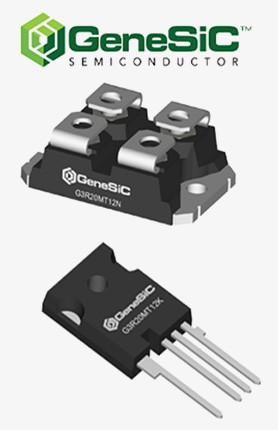
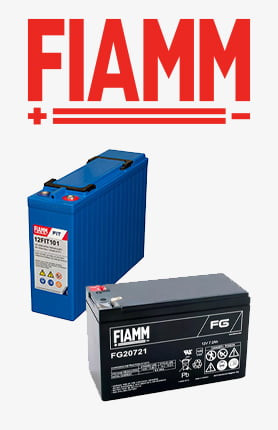
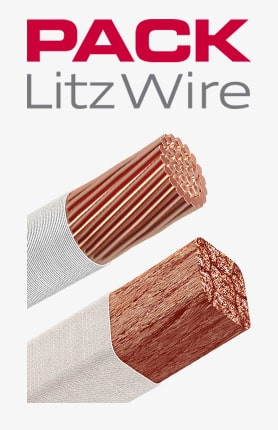
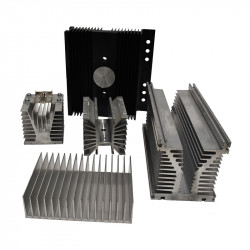
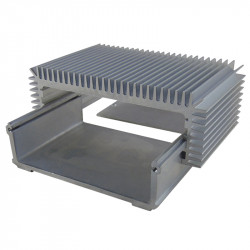
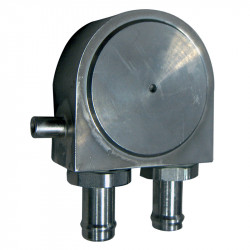
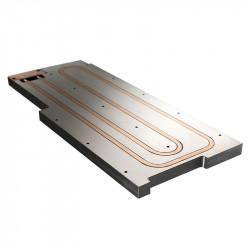
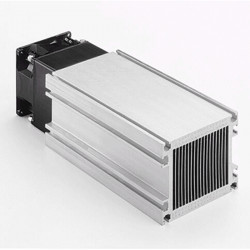
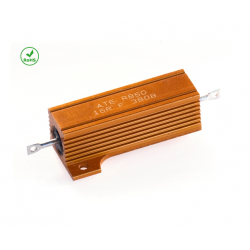
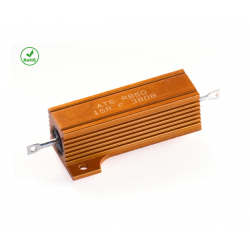
Leave a comment